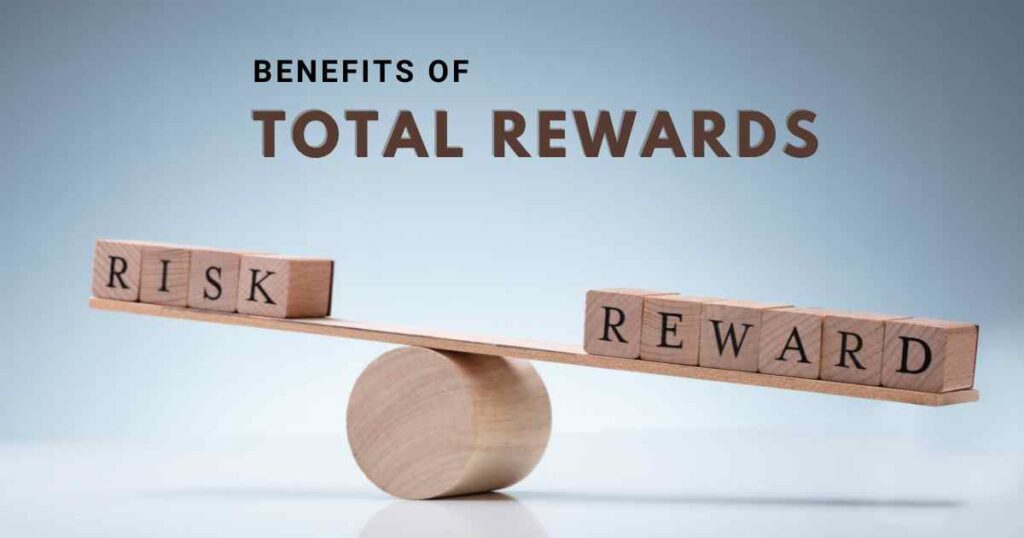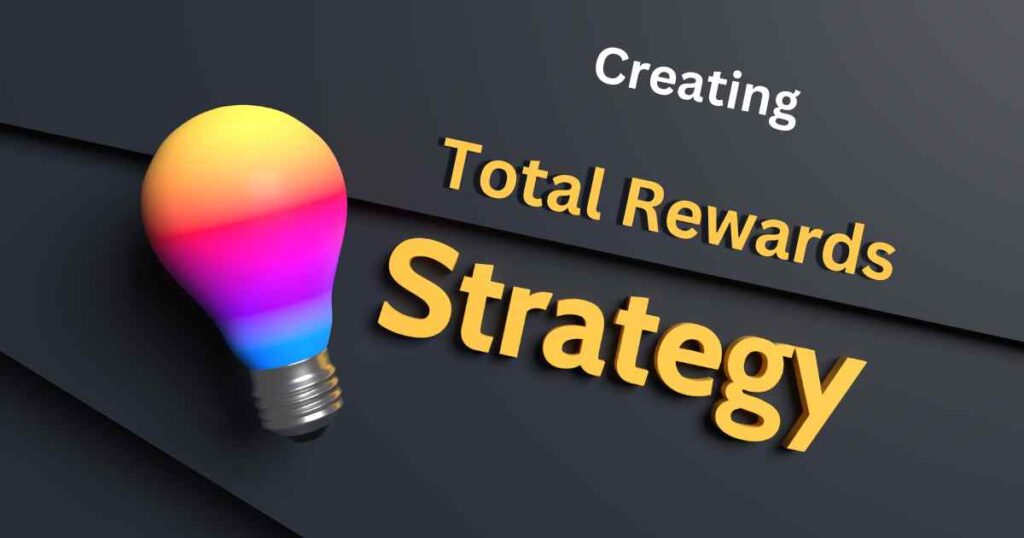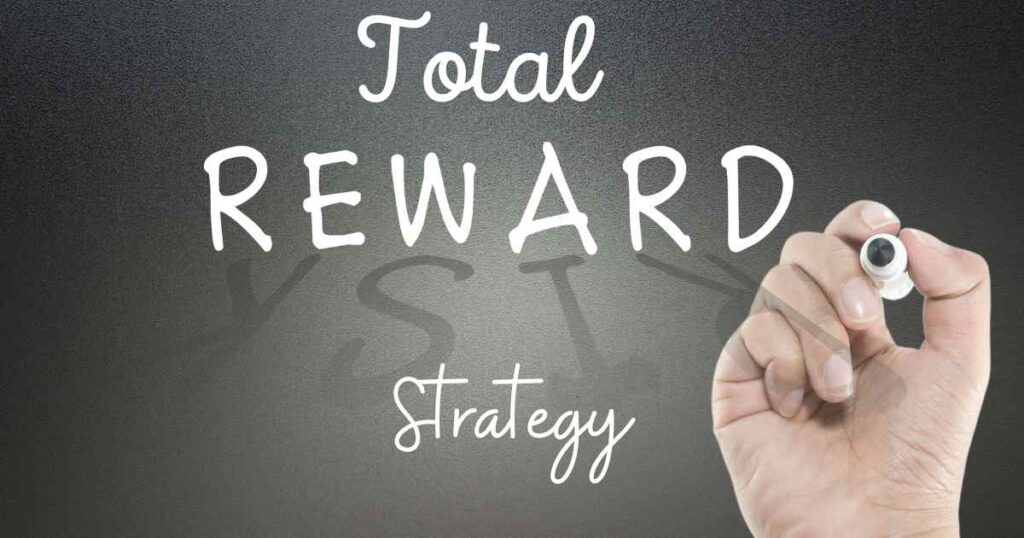In order to attract, retain, and inspire the best talent for your company, it is essential to have a comprehensive strategy for total rewards that goes beyond merely providing pay and benefits. This approach involves aligning your organization’s business goals with strategies designed to cultivate a workforce driven towards excellence through an inclusive and effective rewards program.
The five components of this holistic approach include compensation, benefits, work-life balance, performance and recognition, as well as development and career opportunities. Crafting an effective total rewards strategy depends heavily on finding ways to satisfy not just employee needs and wants but also conforming closely to overarching company values and goals.
In this comprehensive guide, readers can expect a deep dive into understanding all aspects of a successful total rewards platform – what it encompasses, how vital it is in today’s talent market, various benefits you can achieve through its implementation, identifying the five core elements necessary for any diligent execution plan but not limited to only these components- guided recommendations on constructing one uniquely fitting your own specific organization based upon individual company culture.
What is a Total Rewards Strategy and Why You Need One for Your Business

In implementing a total rewards strategy, employers must consider more than just the monetary incentives offered to employees. The approach involves designing and delivering a package of compensations that fulfill various expectations and requirements of team members.
A total rewards strategy helps you to:
- Attract top talent by offering a competitive and appealing rewards package that showcases your employer brand and value proposition.
- Retain high-performing employees by providing rewards that are fair, transparent, consistent, and aligned with their contributions and achievements.
- Motivate your workforce by creating a culture of recognition and appreciation that fosters engagement, loyalty, and productivity.
- Differentiate yourself from your competitors by offering rewards that are unique, flexible, and tailored to your employees’ preferences and needs.
Your organization’s success relies on the talent you attract and retain. For this reason, creating a customized total reward strategy is crucial. Your strategic approach should suit your objectives and budget while reflecting the values of your culture. Lastly, creating a flexible program ensures employees receive what they need even as business conditions shift.
Benefits of Implementing a Total Rewards Strategy

Implementing a total rewards strategy can bring many benefits to your organization, such as:
- Improved employee satisfaction. Valuing and acknowledging employees’ contributions is proven to enhance their happiness, commitment, and involvement in their workplace. Hence, providing recognition programs can positively impact team culture and boost organizational success.
- Enhanced employee performance. Rewarding motivated employees leads to increased productivity, creativity and goal achievement. They are driven to work harder and ultimately exceed expectations in delivering high-quality results.
- Reduced employee turnover. By fostering a culture of loyalty among its employees, organizations can greatly reduce the risks and costs associated with high turnover rates. This includes expenses related to recruitment efforts, losses in productivity and knowledge transfer, as well as negative impacts on customer relations.
- Increased employee attraction. Attracting qualified candidates is crucial for any organization’s success. When employees feel proud of their employer, they naturally become brand ambassadors who promote the organization both online and offline. They’ll jump at any opportunity to endorse the company with top-notch reviews on social media platforms, recruitment websites, or job portal adding value to its reputation that can potentially bring in great hires.
- Strengthened employer brand. Employees who are aligned with your organizational values and vision are more likely to act as ambassadors for your brand. They are also more likely to support your mission and purpose, as well as your social responsibility initiatives. This strengthens your brand image and reputation among your customers, partners, investors, and communities.
What are the 5 Components of Total Rewards Strategy?

A holistic employment package is made up of five components that provide a comprehensive approach to tackling employee needs and preferences. Each component is designed to address a different aspect of the workforce, creating a total rewards strategy that fosters an atmosphere in which employee happiness and engagement thrive. Here are 5 components of Total Rewards strategy:
- Compensation. Fair, competitive and aligned with market and organizational performance – these are the principles of a comprehensive compensation package. It covers all forms of monetary incentives like salary, wages, bonuses, commissions, stock options and much more provided by employers to their employees in return for their hard work.
- Benefits. If you want to keep your best employees engaged over the long term – look no further than non-monetary compensation! Benefits are an essential piece of any competitive total rewards package: by offering things like flexible health insurance options or paid time off; companies can build loyalty among team members who appreciate feeling cared for. Be sure to tailor these offerings to each individual employee so they know just how much you value them as part of your organization.
- Work-life balance. This is a less tangible but equally important component of total rewards. It refers to the rewards that employers provide to employees to help them balance their personal and professional lives. Work-life balance can include flexible work arrangements, telecommuting options, remote work options, compressed workweeks, job sharing, part-time work, sabbaticals, volunteer opportunities, employee resource groups, social events, and other forms of rewards that promote employee satisfaction and engagement. Work-life balance should be supportive, inclusive, diverse, and respectful of the employees’ choices and lifestyles.
- Performance and recognition. This is another less tangible but essential component of total rewards. It refers to the rewards that employers provide to employees to acknowledge their contributions and achievements. Performance and recognition can include performance appraisals, feedback sessions, goal setting, coaching, mentoring, career planning, awards, certificates, plaques, trophies, gift cards, vouchers, tickets, trips, and other forms of rewards that express appreciation and gratitude. Performance and recognition should be timely, frequent, specific, meaningful, and personalized.
- Development and career opportunities. Unlock your employees’ true potential with our comprehensive development and career opportunities. From professional training programs to job rotations and mentorship programs, we provide a diverse range of rewards that match your employees’ interests and aspirations. Enhance their skills, knowledge, and competencies while boosting employee engagement, retention, and overall performance.
Achieving employee satisfaction and retention through your company’s rewards program requires five components working in harmony. By integrating these essential elements, you can create a holistic and customized total rewards package that will meet the unique needs and preferences of each member of your team.
How to Create a Total Rewards Strategy?

A well-crafted total rewards strategy requires much more than just selecting a few employee perks. It needs intentional planning, in-depth analysis, creative design, seamless implementation, clear communication with employees and continuous evaluation to ensure its effectiveness. Take note of these fundamental steps to build an all-encompassing reward system for your organization:
- Before crafting a comprehensive total rewards strategy, you should analyze your current rewards programs and policies. It’s unlikely that you’ll be starting from scratch, so assessing what you have and its effectiveness will help set the foundation for future success. You can use various methods to do this, such as benchmarking, surveys, focus groups, interviews, audits, and analytics. You should also consider your organizational context, such as your vision, mission, values, goals, culture, budget, and competitive landscape.
- Your employees are the lifeblood of your company; therefore, their feedback is critical to achieve success. Using various avenues such as social media platforms and interviews will enable you to gauge employee satisfaction with current rewards measures effectively. Segmenting this data per group preferences fosters more informed reward schemes that cater to everyone’s needs.
- Designing a total rewards strategy is a collaborative effort that should involve input from multiple stakeholders. By including senior management, HR professionals, line managers, employee representatives, and external consultants in the design process, you can gain valuable insights and perspectives to ensure your strategy aligns with your organizational values.
- Discover our exceptional total rewards strategy that is built on a clear and compelling value proposition, solely crafted for your employee satisfaction. Our unique approach differentiates us from our competitors in the market, and we pride ourselves on upholding corporate culture that fosters individuality and originality.
- Don’t let your total rewards strategy go to waste! It’s essential that your employees know about it and comprehend it. Spread the word through a variety of avenues – newsletters, emails; you name it – to get everyone on board. Looking for a powerful total rewards strategy to drive engagement, retention, and productivity? Our program offers a comprehensive package of benefits that aligns with your business goals and attracts top talent. You can trust us as your strategic partner to craft a customized plan based on our years of expertise. Our approach involves assessing the value proposition of each component and ensuring eligibility criteria are fair and transparent. Then we seamlessly guide you through enrollment, evaluation, and communication processes so you can optimize employee satisfaction in no time.
- Your total rewards strategy is an ongoing evolution, and its effectiveness should not be judged by one-time metrics or indicators. To ensure the long-term success of your program, it’s crucial to constantly evaluate performance through key performance indicators such as employee satisfaction, engagement retention turnover rates, recruitment costs and ROI assessments. Soliciting feedback from management and employees alike can provide invaluable insight into how your rewards program can be refined and improved.
Total Rewards Strategy Examples
To give you some inspiration for creating your own total rewards strategy, here are some examples of successful total rewards strategies from different organizations:
- Netflix. Netflix is known for its innovative and generous total rewards strategy that includes unlimited paid time off, unlimited parental leave, flexible work arrangements, stock options, performance bonuses, health insurance, dental insurance, vision insurance, life insurance, disability insurance, employee assistance program, wellness program, free snacks and drinks, and free Netflix subscription. Netflix also offers its employees opportunities for learning and development through online courses, conferences, mentorship programs, and feedback sessions. Netflix’s total rewards strategy is based on its culture of freedom and responsibility that empowers its employees to make their own decisions and be accountable for their results.
- Starbucks. Starbucks is known for its comprehensive and inclusive total rewards strategy that includes competitive pay, tips, stock options, performance bonuses, health insurance, dental insurance, vision insurance, life insurance, disability insurance, employee assistance program, wellness program, tuition reimbursement, adoption assistance, backup care, commuter benefits, partner networks, and free coffee and tea. Starbucks also offers its employees opportunities for learning and development through online courses, coaching, feedback, career paths, and promotions. Starbucks’ total rewards strategy is based on its mission to inspire and nurture the human spirit – one person, one cup and one neighborhood at a time.
- Google. Google is known for its creative and generous total rewards strategy that includes competitive pay, stock options, performance bonuses, health insurance, dental insurance, vision insurance, life insurance, disability insurance, employee assistance program, wellness program, retirement plan, paid time off, parental leave, tuition reimbursement, on-site childcare, free meals and snacks, free shuttle service, bike-to-work subsidy, nap pods, massage rooms, fitness centers, sports facilities, and free Google products. Google also offers its employees opportunities for learning and development through online courses, workshops, conferences, mentorship programs, career paths, job rotations, and promotions. Google’s total rewards strategy is based on its culture of innovation and excellence that encourages its employees to think big and pursue their passions.
Conclusion
A total rewards strategy is a powerful way to attract, retain, and motivate your employees. It can help you create a competitive advantage in the market and enhance your organizational performance and reputation. A successful total rewards strategy involves five essential components that must align with your employees’ needs, preferences, organizational goals, and values. These components include benefits, compensation, work-life balance, performance and recognition, and development and career opportunities. To create a comprehensive total rewards strategy for your organization’s success follow these steps:
- Assess what you already have in place and how effective it is.
- Gather employee feedback and segment your workforce into different groups.
- Include stakeholders in the design process and gain their buy-in and support.
- Create a clear and compelling value proposition that differentiates you from your competitors.
- Communicate your total rewards strategy effectively to your employees using various channels and methods.
- Evaluate and measure the effectiveness of your total rewards strategy regularly using various metrics and indicators.
By following these steps, you can create a total rewards strategy that will benefit your organization and your employees in the long run.

